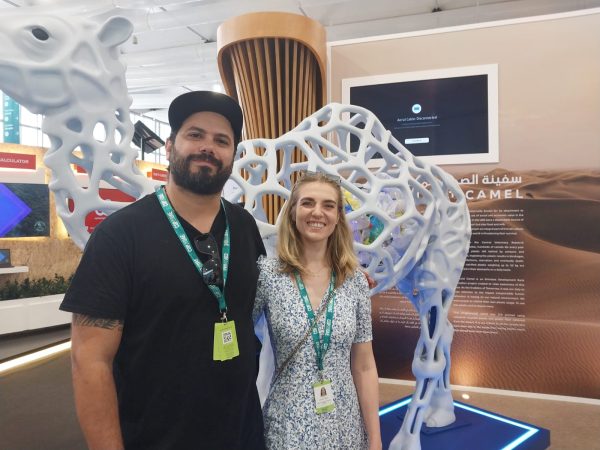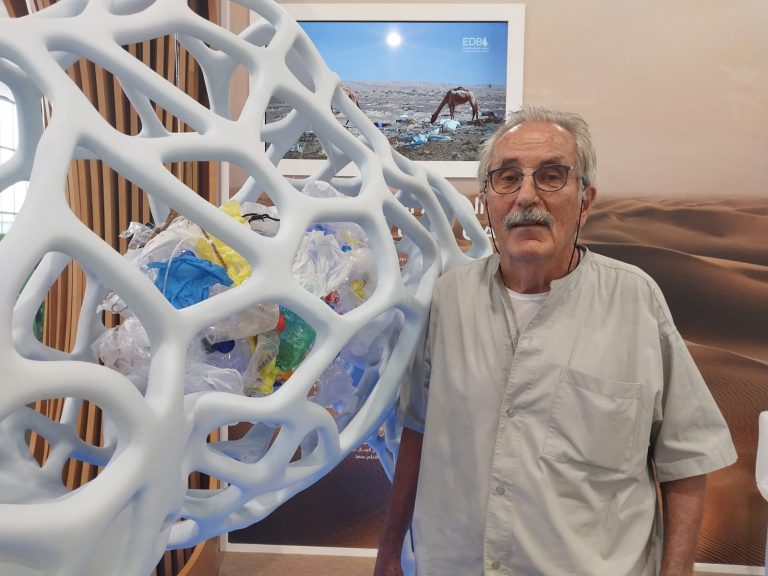Dubai – Just as it has increasingly been found in the digestive tract of fish, plastic has also become an intruder in camels’ feed. Research in the United Arab Emirates found that many of these animals have died because they are eating plastic trash in the desert. A project in the country, presented at the United Nations Conference on Climate Change (COP28), wants to try to counter this situation.

“The Lost Camel” campaign by the Emirates Development Bank (EDB) kicked off the work to change this situation during COP28 and presented at its stand a sculpture of a camel generated by artificial intelligence, printed in 3D and made from plastic waste collected in the desert. Inside the lattice-walled camel is a pile of plastic where the animal’s digestive system would be.
The initiative aims to draw the attention of the COP28 public, generating the intended result – to educate the population on the subject, raising awareness so that they no longer dispose of waste in the desert, the camel’s habitat. Colombian Diego Florez, head of innovation at the advertising and marketing firm Livingroom, which developed the campaign for the EDB, said it originated from research on the subject carried out by veterinarian Ulrich Wernery relating the mortality of camels to the consumption of plastic waste. (In the opening picture, Wernery with the sculpture.)

The idea of bringing the issue to the surface synergized with the Emirati bank, which has as one of its guiding principles guaranteeing a world for tomorrow. Florez said people set up campings and barbecues in the desert and throw plastics, which drift further away. The camels eat them and die. “This is a campaign to educate people so they can see that you can’t throw more plastic in the environment,” he told ANBA.
Florez explained that the campaign is called “The Lost Camel” as a symbol of the camels lost in the desert due to plastic. The initiative was presented first at COP28, but later, the bank will carry out a more extensive campaign, with other means of communication and raising awareness in schools.
Wernery is the scientific director of The Central Veterinary Research Laboratory (CVRL), founded by Sheikh Mohammed Bin Rashid Al-Maktoum. At the EDB stand at COP28, he reported that the consumption of plastic by camels was noticed during the autopsy to detect the cause of death of the animals. He said that investing in and supporting education is the solution to this issue. The veterinarian is recognized for research into diagnosing diseases in camels, and CVRL is also at the forefront of research on the animal.
The journalist traveled at the invitation of the Embassy of the United Arab Emirates in Brazil
Translated by Elúsio Brasileiro




